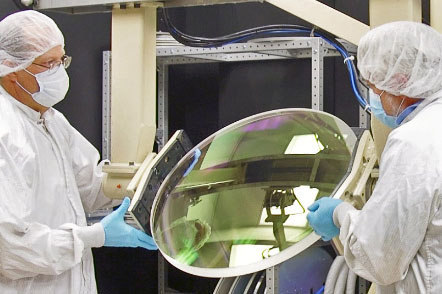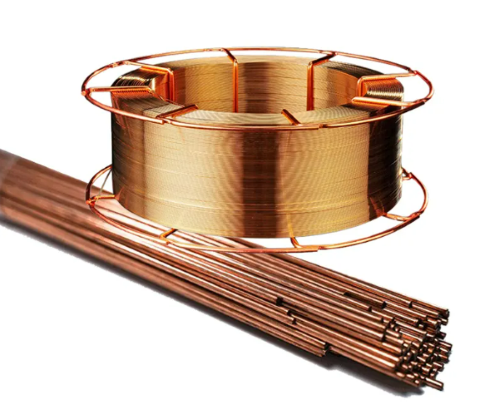The Functional Pigments Commonly Found in Coatings
As we all know, the color performance is the basic function of pigments. But besides the function of color, do you know what other functions pigments have?
Pearlescent pigment
Due to its excellent properties such as the strong luster, good decorative effect, non-toxic, light resistance, weather resistance, acid resistance, alkali resistance, heat resistance, good dispersion, non-conductive, non-magnetic conductivity and so on, pearlescent pigment is widely used in car paint, motorcycle paint, bicycle paint and toys, decorative coatings. The pearlescent pigment is a thin film with a high refractive index and a pearlite color due to light interference. The color of this pigment depends on its optical properties, so there are often different chemical compositions of pearlescent pigments have similar pearlite effect.

Natural pearl pigment comes from pearl, fish scales, the early synthetic varieties contain Hg2Cl2, PbHPO4 or Pb-HASO4 products, and then show alkaline lead carbonate pearl pigment, all of which have certain toxicity. The bismuth chloride oxide (BiOCl) pearlescent pigments with low toxicity were found in the early 1960s. The pearlescent pigment produced today is mainly mica titanium type, which is made of mica, flake quartz, flake alumina or flake glass powder as the base material, and coated with a layer of the transparent metal oxide film with a high refractive index on its surface. When light hits the flat surface of the pearlescent pigment, reflected light and refraction-reflected light will be generated, and they interfere with each other to produce a strong three-dimensional pearlescent color.
Fluorescent pigment
The organic fluorescence pigment is also called solar fluorescence pigment. After absorbing visible light and ultraviolet light, it can change the ultraviolet fluorescence previously invisible to the human eye into visible light of a certain color, and its total reflection intensity is higher than that of ordinary colored pigments. Fluorescent pigments can be divided into two types: fluorescent pigment and fluorescent resin pigment. Fluorescent pigments are widely used in safe passageways, safety doors, firefighting equipment, traffic signs, as well as eye-catching advertising, buildings, decorations and so on.

Inorganic fluorescent pigments are mainly composed of Zinc sulfide (ZnS) and Cadmium sulfide (CdS) and contain trace metallic compounds such as Cu, Ag, and Mn as activators, which can present green, red, blue and yellow light according to different activators. Inorganic fluorescent pigments are colorless or faintly colored in sunlight, and there are varieties that only show color when exposed to ultraviolet light.
Temperature-indicating pigment
Temperature-indicating pigments are also called color-changing pigments. If the dis-colorant pigment is used as the finishing paint in somewhere the temperature change is difficult to measure, the temperature change can be observed from the color change of the paint film. These pigments are divided into two categories: one is reversible discoloration pigments, which change color when the temperature increases, and then return to the original color after cooling; the other is the irreversible pigments, which undergo irreversible chemical changes when heated, so they cannot return to their original color after cooling.

Commonly used irreversible color pigments include sulfates, nitrates, phosphates, chromates, sulfides, oxides, azo pigments, phthalocyanine pigments and aryl methane dyes of metals such as lead, nickel, cobalt, iron, strontium, zinc, manganese, molybdenum, barium and magnesium. The commonly used reversible pigment is mainly Ag, Hg, Cu iodide, complex or complex salt cobalt salt, nickel salt, and hexamethylenetetramine compounds formed.
Metallic pigment
Metallic pigments are a special kind of pigments with a long history. With the development of modern industry, the demand for the variety of powders is increasing. The common metallic powders are aluminum powder, zinc powder, and lead powder, and the alloy forms of metal powder are copper and zinc powder (commonly known as gold powder), zinc and aluminum powder as well as stainless steel powder.
Compared with other pigments, metallic pigments have their own characteristics. Powdery metallic pigments are composed of metals or alloys with bright metallic luster and color, so many metallic pigments are used as decorative pigments, such as copper-zinc powder, aluminum powder and so on.
Anti-rust pigment
The anticorrosive pigment is not for the purpose of coloring but for the preparation of anticorrosive paint pigments, which plays a role in protecting the metal surface from corrosion. Rustproof substances such as red lead powder, iron red powder, composite iron titanium powder, aluminum zinc tripolyphosphate powder, etc., are collectively referred to as rustproof pigments.

The anti-rust pigments used in traditional coatings are mainly those containing chromium, lead, and cadmium, such as red lead, lead powder, and chromate of zinc, barium, and lead. The coating that makes up with them has good anticorrosive property, but its itself is poisonous and can pollute the environment and harm health in production and use process, which was already restricted strictly by a lot of countries at present. Nowadays, environmental protection has been paid more and more attention, and the development of new environment-friendly and pollution-free anti-rust coatings has become one of the development trends. Researchers at home and abroad have developed phosphate, molybdate, borate and flake pigments and other non-toxic and highly effective anti-rust pigments.
Antifouling paint
There are more than 18,000 kinds of attached animals and 600 kinds of attached plants in the sea areas of the world. The attachment of Marine organisms to the bottom of a ship will cause a series of obstacles, such as increasing the stance and fuel consumption, reducing the speed, as well as increasing mechanical wear. In addition, the adhesion of microorganism on the surface of steel structure causes microorganism corrosion of steel and damages the coating on the metal surface, thus accelerating the corrosion and aging of metal. As a result, the life of steel structure of ships and Marine engineering is significantly shortened, which forces ships to enter the dock very frequently for renovation, which wastes a lot of time and resources.

Antifouling paint is an essential product in Marine paint, which accounts for about 50% of the material cost in Marine paint. Antifouling paint is a special coating applied on the bottom of the ship and underwater facilities. Generally, the coating is mounted on the bottom of the ship and is in the outermost layer. Its main function is to release toxic materials gradually through the exudation, diffusion or hydrolysis of paint film toxic materials, so as to "poison" the attachment, to prevent Marine attachment organisms attached to the bottom of the ship or Marine underwater facilities.



